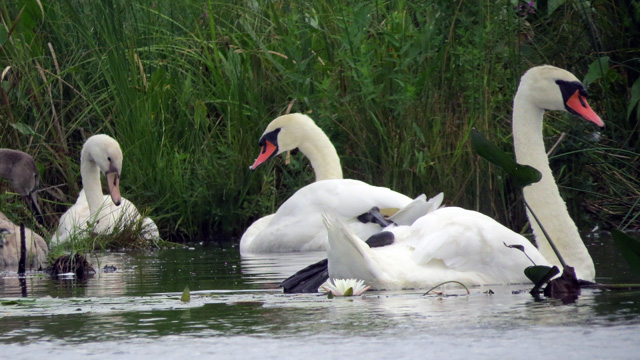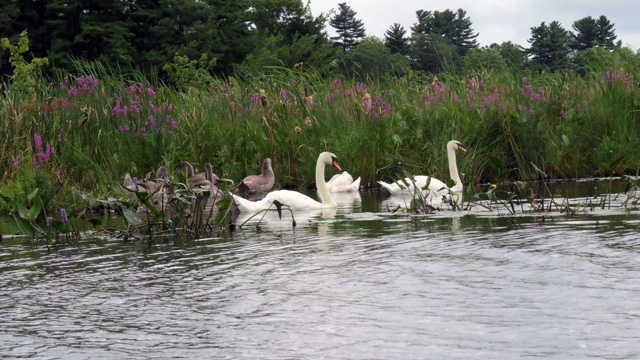After four days of rain showers with some thunderstorms, we finally are getting a day or two of muggy but cloudy weather. Yesterday morning, I asked our grandson Mac if he wanted to paddle for a bit and when Mary graciously offered to watch the dog, we were off to the local lake.
Lake Attitash’s chief feature for us is that it is only a few miles away. It is shallow, small (360 acres) and extensively developed; roads and cottages, two or three rows deep in places, virtually ring the entire lake, as well as a summer boys’ camp, and at least two boat docks. There are literally hundreds of boats of all types and sizes but most just are active in the evening and on weekends. It was rather quiet today but the south wind gave us a steady chop to deal with.
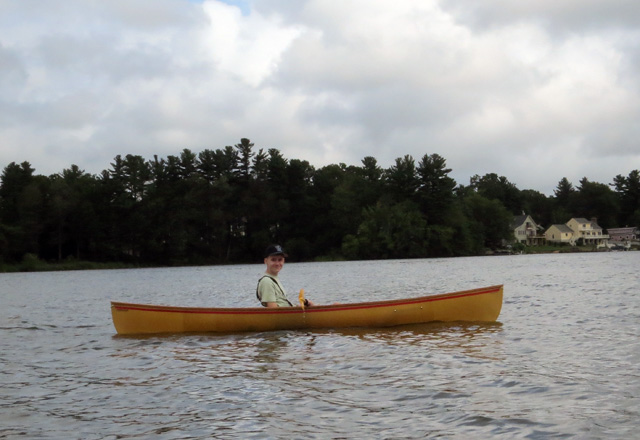
We just had launched when we saw a Bald Eagle cruising past. The waves were hitting us from the stern quarter so I was more focused on paddling than grabbing for the camera. Ten minutes later, a Great Blue Heron lifted off from the bushes right in front of us, followed by an active Belted Kingfisher who delighted us by diving rather close by the boats.
There is a long inlet that is very shallow and full of water lilies, water hyacinths, and many aquatic weeds. It is protected from the wind and often has a lot of waterfowl. We spotted our Great Blue Heron, or his brother, fishing in the shallows.
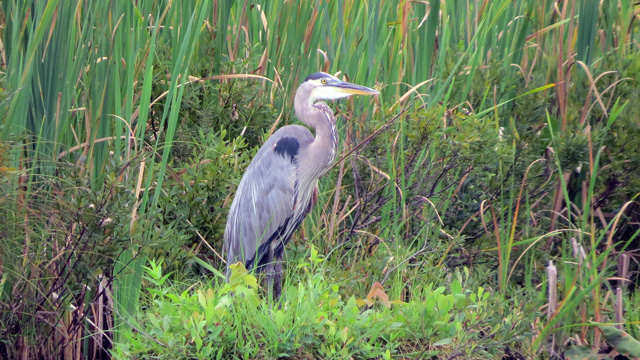
Further ahead, I spotted this trio of young Mallards cruising just so they kept ahead of us.
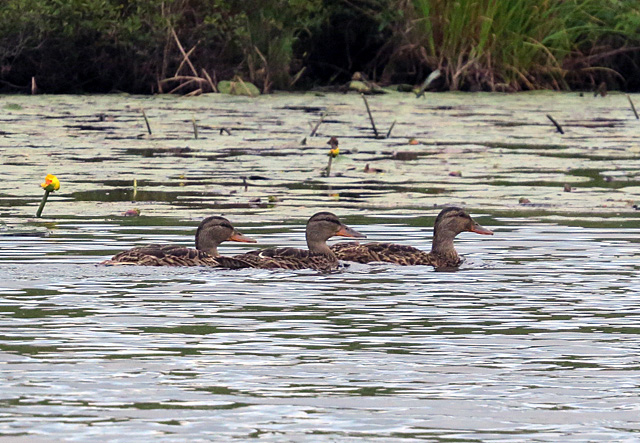
The inlet has a protective boom to supposedly keep nutrients and algae out of the lake. It once may have been a good idea but as Mac says, "Doesn’t look like they maintain it." Sticks and branches pushed sections to allow water to just move over the top – and looking at the lake, it appears to be a lost cause. This lake is eutrophication with a capitol E.
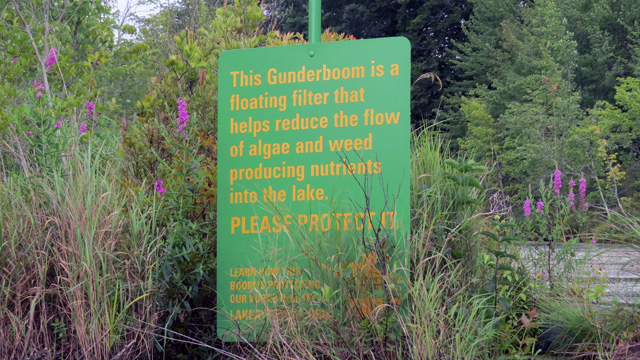
Heading back down the inlet, we saw a Mute Swan family again – having seen the adults earlier. The cygnets are nearly full-grown but still grey and fuzzy-looking.
Heading back into the wind, the paddling was a little slower but the boats tracked better. We ended the outing with a flyover by an Osprey. It was a fun outing with my fourteen-year-old grandson who is a pretty good paddler/birder. Good birding.
Discover more from Vermont Birder
Subscribe to get the latest posts sent to your email.

